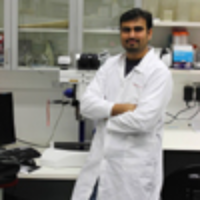Endovascular treatment of complex cerebral arterial saccular aneurysms with different methods of coiling: 14 years of experience review
Published on: 21st June, 2017
OCLC Number/Unique Identifier: 7317654645
The Objective: to improve the treatment results for patients with cerebral arterial saccular aneurysms by optimizing of differentiated approach to the using of endovascular assisting occlusion techniques.
Materials and Methods: The work is based on the comprehensive survey and treatment of 1345 patients with cerebral saccular arterial aneurysms (AA), who were treated at the SO “Scientific-Practical Center of endovascular neuroradiology of NAMS of Ukraine” from 2002 to 2016. 214 cases were selected for further clinical-instrumental dynamic observation in follow-up period. All patients were operated by endovascular approach in “before hemorrhage” period, in acute or “cold” period of the disease on for symptomatic or asymptomatic intracranial saccular AA in both vascular pools with balloon-remodeling or stent-assisting techniques using with the coiling or just detachable coils (DC) using-mono-coils occlusion technique. Depending on the initial endovascular occlusion method, the patients were divided into three groups for observation: I group (mono-coils occlusion)-82 (38.3%) patients, II group (balloon-remodeling technique using)-68 (31.8%) patients, group III (stent-assisting technique occlusion)-64 (29.9%) patients. The life quality and the level of social adaptation were evaluated before hospital discharge and at the follow-up control examinations by Glasgow Outcome Scale (GOS) and by the modified Rankine scale (mRS). AA radicalism occlusion was assessed by Modified Raymond-Roy Scale (MRRS) (Mascitelli JR, et al., 2015). AA occlusion I and II by MRRS was considered as “Effective”.
Results: 9 criteria of cerebral saccular AA complexity inherent in endovascular surgery have been developed based on the technical and surgical features of endovascular methods of the cerebral AA occlusion and X-ray-anatomical characteristics of aneurysms, which complicated the “effective” reconstructive occlusion of AA cavity.
The evaluation of the AA complexity criteria prognostic significance to achieve the “effective” primary occlusion, shown different results in different groups: high prognostic significance of 4 criteria was shown in group I, of 2 criteria - in group III, and no any criteria significance in group II.
There was no statistically significant difference between groups in the primary AA occlusion efficacy and initial good results by GOS and mRS.
It was proved that endovascular occlusion of complex cerebral AA with the assisting methods using has high efficiency in all periods of the disease, unlike the method of mono-coils occlusion, which is most effective in acute and “cold” periods.
There was no statistically significant difference between the number of intraoperative, postoperative and non-surgical complications (p>0.05).
It was found that all methods of complex AA endovascular occlusion can effectively prevent the disease recurrence despite the differences between them in the stability of the AA cavity occlusion.
Conclusions: Consideration of developed AA complexity criteria during endovascular surgery planning allows to choose the most optimal and safe individual method of primary or phased AA occlusion and helps to reduce the frequency of AA recanalization in follow-up period. The choice of the complex AA occlusion method doesn’t effect on result of primary treatment, the number of intraoperative complications and the quality of primary occlusion. However, an analysis of the long-term treatment results indicates that the assisting techniques have proven advantages according to the occlusion stability.




